
It’s important to choose the appropriate glove for your application. Here's a guide to help you find the right pair for your application.
Shop all Gloves Here and if you can’t find what you’re looking for, give us a call at 800-525-3313.
Measuring For A Proper Fit
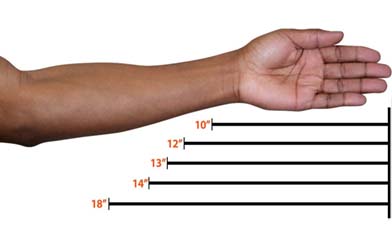
Glove Length
Measure from the tip of the middle finger to where
the cuff edge should be on the arm or wrist.
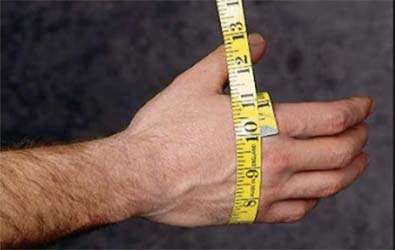
Hand Size
Use a tape measure to find the circumference of your
hand around the palm area. This measurement, in
inches, is equal to glove size.
.png)
Types & Materials
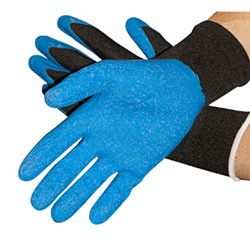
Coated
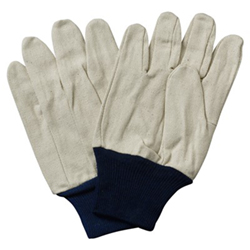
Cotton/Jersey/Knit
An industry standard for general
purpose applications, these gloves
are soft, breathable and comfortable.
Available in cotton or cotton/poly blends
and different weights/qualities. Many are
reversible for double the wear.
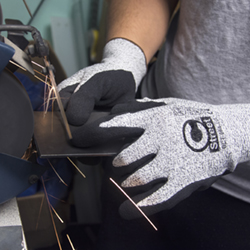
Cut Resistant
One of the fastest growing categories in
glove protection, cut gloves do what they
say. Investing in a cut-resistant glove will
save you time and money by preventing
hand injuries while working around sharp
edges. Many different fibers are used to
create a cut-resistant shell. ANSI Cut Level Info
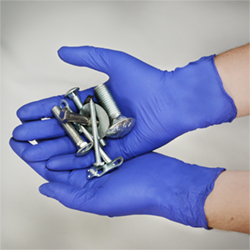
Disposable
and more. Meant for single use applications
among a wide range of industries. Many
of these gloves are FDA approved for use
in food processing applications.

Driver's
Made from cowhide, goatskin or pigskin
and available either lined or unlined.
These gloves offer excellent abrasion
resistance, comfort and dexterity. Most
feature a keystone thumb for better
flexibility.
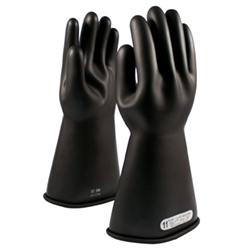
Electrician's
These highly specialized gloves are
essential when working around electricity.
They go through very strict testing to
ensure they meet or exceed ASTM D120,
the standard specification for rubber
insulating gloves. Must be worn with a
leather protector.
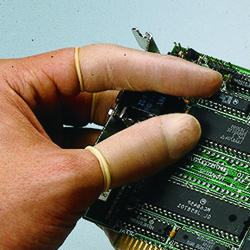
Finger Cots
glove, and this is where the finger cots
come in! They come both rolled and
unrolled, and are an excellent alternative
to a full disposable glove. Available in
latex, nitrile or split leather.

Grip
Combines the comfort and durability of
cotton/jersey or string knit gloves with
added gripping ability. These gloves
provide superior grip in both wet and dry
conditions allowing you to complete your
tasks quickly and efficiently.

Heat
Provides protection against temperatures
ranging from 200-2000 degrees. They
come in many materials, including cotton,
Kevlar, terry and leather. Application must
be considered when choosing which heat
glove is right for you. The weight and
length of time holding the hot object
must be taken into account.
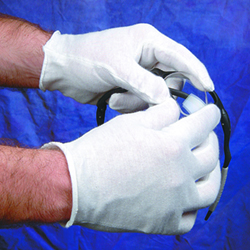
Inspection
protection. They absorb oils and
perspiration from your hands insuring the
products you are working with are kept
clean. Can be worn alone or used as a
liner. Available in cotton or nylon.
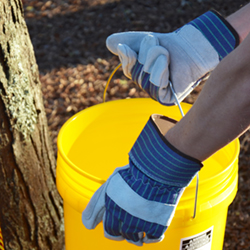
Leather Palm
An old standby, these are the workhorse
of the glove world. They are made of
cowhide or pigskin, and are available in
different grades depending on the quality
of the leather. Looking for a longer life?
Double palm gloves add additional leather
to the palm for a glove that will stand up
to most jobs.
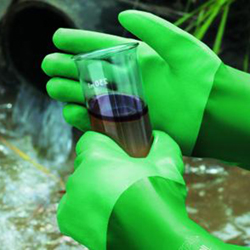
Liquid & Chemical
These gloves provide the highest level of
chemical protection on the market. They
give you a barrier from a wide variety of
hazardous chemicals while maintaining a
high level of dexterity and comfort. Some
of these gloves can be worn as liners
under heavier gloves.
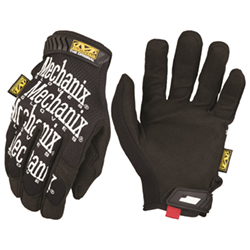
Mechanic's
gloves are a durable alternative to basic
work gloves. Their snug fit and breathability
provide a high degree of dexterity and worker
acceptance. This category also includes
anti-vibration gloves, which are made with
a special layer to reduce low frequency
vibrations found in construction applications.

Unsupported
These gloves are thicker and provide
greater protection against liquids and
chemicals. Made from nitrile, latex and
neoprene, they are also much more
abrasion and puncture resistant. Available
both lined and unlined depending on
preference and application.

Welding
These gloves are designed to protect
your hands while keeping them cool and
dry. MIG/TIG gloves are unlined for better
finger sensitivity, whereas stick welding
gloves are thicker and are a better option
for welding that uses extremely high heat.
Cuff Styles

Band Top
Provides added air circulation and comfort
and can easily be worn over a shirt cuff
.jpg)
Gauntlet
Provides added protection up to
the arm with a 4 – 4-1/2” cuff
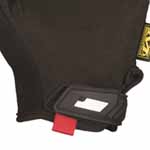
Hook and Loop
Adjustable cuff closure for a
customized fit

Knit Wrist
Designed for a snug fit to the wrist and
prevents debris from entering the glove
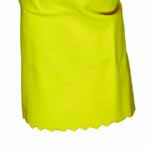
Pinked
Economical alternative to the rolled cuff and
offers improved grip when donning and
removing
.jpg)
Rolled
Provides cuff strength when
donning and prevents tearing
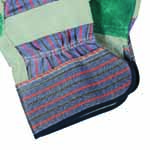
Safety
Protects the wrist area with a 2 – 2-1/2” cuff
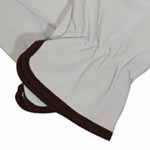
Slip On
Open design allows air to flow freely
and provides an easy on/off

Straight
Cut straight across the top
with no partial openings
Thumb Styles
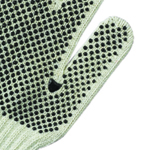
Ambidextrous
Allows for wear on either hand for
a longer lasting use

Keystone
The ergonomically designed thumb
increases mobility and comfort
.jpg)
Straight
Provides a closed thumb gripping position
for added comfort and durability
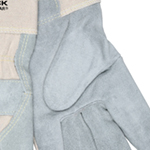
Wing
The angled construction allows good flexibility
with no seams on the palm side of the glove to
interfere with the job you are doing or cause
worker fatigue
Patterns
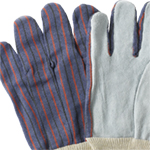
Clute
Clute pattern is a style with a one piece
palm and no seams at the base of the fingers.The
seams are along the fingers on the inside of the
glove away from the high wear areas.
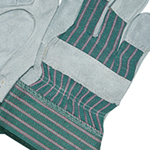
Gunn
The single piece seamless back and the
finer seams set further away from the working
area are the standard features found in this
type of glove.
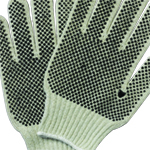
Reversible
Reversible pattern gloves provide the option
to use the glove on either hand. The glove is made with a two piece construction, seamless style, or sewn with a wing thumb and the two middle fingers stitched on one side.
Linings
Fleece
A warm polyester fabric with a brushed nap used to line gloves used in cold weather applications
Flock
Cotton fiber applied to the inside surface of a glove during the
manufacturing process. The flock lining makes it easier to put the
glove on and take it off and also helps absorb perspiration.
Foam
The nylon foam lining is ideal for cold weather gloves.
The foam lining locks out cold and moisture and locks in warmth
Jersey
This type of lining is usually seen with nitrile, rubber and PVC gloves.
The jersey lining provides added comfort and absorbs perspiration.
The jersey liner also helps to make the gloves more durable and
gives minimal heat protection for a wide variety of applications.
Knit
This type of lining is usually seen with nitrile, neoprene or rubber
gloves. The knit lining provides ease in putting the gloves on and
off as well as perspiration absorption and enhances the glove’s flexibility.
Thermal
Offers maximum comfort and cold temperature protection.
Thermal lined gloves maintain a high degree of flexibility and comfort.
Thinsulate™
A trademarked cold weather lining. Thinsulate™ provides
excellent cold weather protection without sacrificing flexibility or dexterity.
Unlined
Typically seen in applications where contamination from the lining
is a concern.
Added finger dexterity and better sensitivity are also
benefits of unlined gloves.
Leather
Cowhide
Comfortable, durable, and abrasion resistant
Goatskin
Softer and more durable than cowhide leather
Grain Leather
Offers excellent resistance against abrasion
Pigskin
Breathable and offers excellent flexibility when wet
Split Leather
Provides great abrasion and scrape resistance
Coating
Neoprene
Resists abrasion, puncture, tears and a broad range of chemicals.
Neoprene gloves come in a wide variety of patterns for use in wet
and dry applications.
Nitrile
Offer exceptional cut, abrasion and puncture resistance.
They are a great replacement for leather, cotton and PVC gloves.
Polyurethane & HPT
Provides comfort, sensitivity and dexterity. The coating offers
added grip and abrasion resistance.
PVC
Offer superior abrasion and puncture resistance. They can be used in
light-duty applications where liquid and limited chemical protection is needed.
Rubber
Provides outstanding grip, dexterity, and abrasion resistance.

